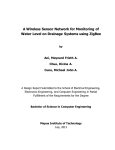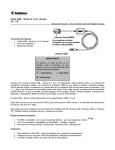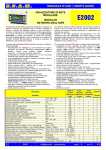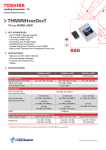Download User`s manual. Special functions of GalileoSky terminal: GPRS
Transcript
User’s manual. Special functions of GalileoSky terminal: GPRS-traffic cost optimization, operation in roaming, STELS mode, power saving. Necessary tools, devices, materials To set special functions you should have Windows-based computer with the installed program of configuration of GALILEOSKY terminals – "Configurator". It is recommended to install the latest version of the program from the site http://7gis.ru/support/konfigurator.html Picture 1 General information The GalileoSky terminal (hereinafter - the terminal), besides performance of the main functions determination of location of a mobile object, record and transfer of number of vehicle parameters, discrete and analog inputs state of the terminal and digital interfaces to the monitoring server, possesses additional features. Settings of the terminal allow: 1. to lower financial expenses for data transmission in roaming; 2. to lower financial expenses for data transmission in the native region; 3. to reduce vehicle accumulator load and (or) to prolong operating time from the internal accumulator. Operation in roaming The terminal allows setting special parameters of data transmission in the international and national roaming. Setting of the terminal can be performed in two various ways: 1. Setting via the Configurator. Go to the “Setting” tab -> “Data transmission” of the Configurator, set the necessary parameters (Pic. 2): Picture 2. Roaming setting for the terminal “Mobile country code (МСС)” – when setting this parameter, specify a country code (the international roaming, for example for Russia – 250) or a code of the country and a code of the operator SPA “GalileoSky” LLC Page 1 User’s manual. Special functions of GalileoSky terminal: GPRS-traffic cost optimization, operation in roaming, STELS mode, power saving. (national roaming). List of country codes can be viewed at http://www.itu.int/dms_pub/itu-t/opb/sp/TSP-E.212A-2010-PDF-E.pdf. “Maximum volume of session” – set the quantity of transmitted data in bytes or "Send the one first packet" value. Each cellular operator has minimum tariffing interval in roaming. It is recommended to set maximum data volume equal to half of this interval (the second half is left for maintenance TCP/IP traffic which volume depends on connection quality). “Connection interval” - specify frequency of GPRS session installation for data transmission. «Operator 1»…«Operator 15» - if it is preferably to transmit data through certain providers you should specify the list of codes of mobile network operators. For actuating of the performed settings press “Apply” button. Algorithm of operation of the terminal in roaming is the following: 1.1. The terminal receives the mobile country code and the code of mobile network operator at registration in cellular network in the place of current stay; 1.2. the terminal checks, whether there is a list of codes of mobile network operators and compares the received code of the operator with this list: 1.2.1. in case the received code of the operator isn't included in this list, the terminal registers in a GSM network, but GPRS connection will never be established; 1.2.2. in case the received code of the operator is included in this list (or the list of codes isn't filled in) the terminal compares the received code of the country or the operator with the set parameter “Mobile country code (МСС)”. If they do not match the terminal is in roaming and activates GPRS-connection according to set “Connection interval” and “Maximum volume of session”. ATTENTION! Being in roaming the terminal constantly supports registration in GSM-network, but initializes GPRS-session only according to the schedule, thus it is always possible to make a call to the terminal or send SMS with a command and decrease GPRS-traffic expenses. 2. Setting via commands. With the help of the following commands it is possible to configure roaming parameters remotely. Command format Roaming MCC_MNC,Size,Interval Parameters MCC_MNC – a mobile code of the country where the data can be transmitted without any limitations (the list of codes is given in http://www.itu.int/dms_pub/itu-t/opb/sp/T-SP-E.212A-2010-PDF-E.pdf ), for example the Russian Federation code is 250 or it may be a combination of a country and a mobile codes. Zero means that there are no special roaming settings; Size – maximum number of bytes which can be transmitted during one connection session in roaming. At the value being equal to 0 only the first packet is transmitted; Interval – connections interval in hours. Settings of data transmission in international roaming. Request: Roaming 25099,10000,24 Reply: ROAMING:Home=25099,MaxBytes=10000,Interval=24; Command format OPSO n1,n2,n3,n4,n5,n6,n7,n8,n9,n10,n11,n12,n13,n14,n15 Parameters n1-n15 - preferred GSM-networks. Explanation A list of preferred GSM- networks for SIM0. The network is defined by a mobile country code and a mobile operator code Example Request: OPS0 25001,25099 Reply: OPS0:25001,25099,,,„„„„,,; Explanation Example SPA “GalileoSky” LLC Page 2 User’s manual. Special functions of GalileoSky terminal: GPRS-traffic cost optimization, operation in roaming, STELS mode, power saving. ATTENTION! If the terminal works in roaming, pay attention to how “The order of data sending from archive to the server” is set in the “Settings” tab -> “Track”. In case if sending is in chronological order we recommend to adjust transmission of coordinates and readings of sensors in the first packet because at the GPRS connection organization in the presence of earlier unsent data the terminal will try to send these data, instead of the current values. The first packet will always be sent. So when transmitting to the server the terminal will send one point with the current coordinate of the vehicle and the oldest not unloaded part of the archive. If the archive is stored on the micro-SD card, it must be done necessarily since data from the micro-SD card are unloaded in chronological order. Recommendations on GPRS traffic optimization GPRS-traffic expenses decrease at online monitoring may be reached by following these advices: 1. Turn off the transmission of unused data, for example temperature, acceleration, analog and digital inputs values which have no connected sensors. In the Configurator select the “Settings” tab -> “Protocol”, clean ticks from unnecessary parameters (Pic. 3), pay attention to the counter of bytes of point data, which will be saved to the memory and press “Apply” button. Picture 3. Disabling unused parameters The same operations can be performed using MainPack and HeadPack commands. 2. Increase the period of points’ record in memory. In the Configurator select the “Settings” tab-> “Track”, set the necessary parameters (Pic. 4) and press “Apply” button. SPA “GalileoSky” LLC Page 3 User’s manual. Special functions of GalileoSky terminal: GPRS-traffic cost optimization, operation in roaming, STELS mode, power saving. Picture 4. Setting of the period of points record in memory The same operations can be performed using WrPeriod command. Command format WrPeriod x,y Parameters x – Period of packet recording in memory in motion, [sec.]; y – Period of packet recording in memory when the vehicle stops, [sec.]. Explanation Period of packets recording when the vehicle is moving or when it stops. Example Request: WrPeriod 60,180 Reply: WRPERIOD move=60 parking=180 ATTENTION! Server monitoring software has the parameter of the admissible period of inactivity of the terminal and when exceeding the specified value, terminates the connection with the terminal. Find out the value of this indicator from the developers of the server software. This parameter should be taken into account when setting points’ record period, otherwise, the traffic will increase because of overhead costs of restoration of connection with the server. Let’s consider the example: points’ record period at a stop is 1200 seconds (20 minutes), period of termination of connection by the server at inactivity of the terminal is 180 seconds (3 minutes). The terminal defined that the vehicle stopped and turned on the timer for record of the following point in 20 minutes, in 3 minutes the server terminated the connection since it didn't receive data from the terminal. The terminal immediately tries to restore the connection and reconnects to the server. This happens 6 times and only after 20 minutes the Terminal will send the next point. As a result traffic expenses will considerably outweigh the savings from increasing points’ record interval. 3. Increase turning angle at which the terminal record a point, and distance, at exceeding of which the point is recorded. In the Configurator select the “Settings” tab -> “Track”, set the necessary parameters (Pic. 5) and press “Apply” button. Picture 5. Setting of parameters of movement for record of points in memory The same operations can be performed using Turning command. Command format Turning V,A,D,S,dS Parameters V – minimum speed that enables drawing of the track on the corners, [km/h]; A – minimum turn angle for device to record a track point, [º]; D – the distance above which another packet will be saved to the device memory, [m]; S –the speed above which for dS-multiple amount another track point will be recorded, [km/h]; dS – speeding interval, [km/h]. Explanation Configures track detail representation. SPA “GalileoSky” LLC Page 4 User’s manual. Special functions of GalileoSky terminal: GPRS-traffic cost optimization, operation in roaming, STELS mode, power saving. Example Request: Turning 3,10,300,60,20 Reply: TURNING:Speed=3,Angle=10,Distance=300,SpeedEx=60,SpeedDelta=20; 4. Set filtering of coordinates at a stop so as the terminal can correctly choose points’ record period. The terminal can determine the stop according to several elements: accelerometer data; external supply voltage; ignition sensor indications. To set the parameters in the Configurator select the “Settings” tab-> “Track”, set the necessary parameters (Pic. 6) and press “Apply” button. Picture 6. Setting of parameters of stop for record of points in memory The same operations can be performed using the commands: Command format AccSens Sens,TO Parameters Sens – accelerometer sensitivity. TO – the time after the vehicle stops, during which coordinates will be updated, [sec]. Explanation This function allows you to avoid unnecessary outliers after the vehicle stops. Default value is 40,300. Sens value equal to 600 is 1g (g –gravitational acceleration) Example Request: AccSens 40,300 Reply: Accelerometer sensitive: sens = 40,time out=300 Command format Mhours LoLevel,HiLevel Parameters LoLevel – input voltage + supply voltage at stopped engine, [mV]; HiLevel – input voltage +supply voltage at started engine, [mV]; Explanation Allows filtering false coordinates after the vehicle stops. Example Request: mhours 12000,14500 Reply: Mhours: lolevel=12000,hilevel=14500; Command format Ignition N Parameters N – an input used as an ignition sensor: 0 – ignition sensor is not used; 1 – input 0 is used as ignition sensor; 2 – Input 1 is used as ignition sensor; 3 – Input 2 is used as ignition sensor; 4 – Input 3 is used as ignition sensor; 5 – input 4 is used as ignition sensor; 6 – input 5 is used as ignition sensor; 7 – input 6 is used as ignition sensor; 8 – input 7 is used as ignition sensor. Explanation If there is no response for a given input, vehicle is considered to be not started, and coordinates are not updated. It allows you to avoid outliers after the vehicle stops. Triggering on input is determined by the limits set by InCfg command SPA “GalileoSky” LLC Page 5 User’s manual. Special functions of GalileoSky terminal: GPRS-traffic cost optimization, operation in roaming, STELS mode, power saving. Example Request: Ignition 1 Reply: IGNITION:1; Stels mode and packet transmission If continuous online monitoring isn't a paramount need, it is possible to adjust a packet transmission of data. In this case the terminal will periodically contact, send data from a black box and disconnect from the server. The economy is reached due to reduction of overhead costs of transmission of one packet of information since when sending data from the archive the size of a packet can reach 1000 bytes, and at online monitoring one point (some tens of bytes) is usually sent. At the same time the operation time of the terminal from the accumulator increases, as in periods of disconnection from the server, the terminal disables the GSM module. To set the parameters in the Configurator select the “Settings” tab -> “Data transmission”, set the necessary parameters (Pic. 7) and press “Apply” button. ATTENTION! “Connection period in hours” parameter is set relating to Greenwich mean time (for example, the values given in the picture mean that the terminal will contact every other day at 13 o'clock after midnight with the duration of the communication session 5 minutes, i.e. by Moscow it will mean 17 o'clock). Picture 7. Setting of parameters of a packet transmission The same operations can be performed using Stels command: Command format Parameters Example Stels pday,phours,minGSMon pday – device contact is enabled every p days since the beginning of the month, in other words on pday- multiple days ; phours – device contact is enabled every p hours since midnight GMT minGSMon – GSM unit is enabled for minGSMon minutes since the beginning of the hour. Request: stels 1,14,15 Reply: Stels: pday=1,phours=14, minGSMon=15 ATTENTION! - To enable contact once a day phours must be greater than 11, i.e. the connection once in 11 hours can be enabled at 11 o’clock and at 22 o’clock. If it is set to contact once in 12 hours, the contact will be enabled at 12 o’clock and the next must be at 24 o’clock, but this is another day, therefore the connection will not be realized; - Contact at 0 o’clock GMT cannot be enabled whatever the settings; - Remote commands will work only when the radio silence mode is disabled, i.e. GSM-unit is on; - Do not set the connection time less than five minutes; otherwise the terminal will not have enough time to connect to the server and to tell its location. SPA “GalileoSky” LLC Page 6 User’s manual. Special functions of GalileoSky terminal: GPRS-traffic cost optimization, operation in roaming, STELS mode, power saving. Power saving The built-in accumulator allows the terminal to work without external power supply for a period of up to 8 hours. To increase operating time and to decrease power consumption of the terminal in an operating mode it is possible to execute the following actions: 1. Turn off the unused RS232 ports, to do this go to the “Settings” tab -> “Digital inputs” of the Configurator and set the type of periphery “no” at the specified ports; or send RS2320 0 or RS2321 0 commands in the “Commands” tab. 2. Turn off the integrated CAN-controller if the terminal is not connected to a CAN-bus. To do this go to the “Settings” tab -> “CAN” of the Configurator and specify the filter type “CAN turned off”; or in the “Commands” tab send CANREGIME command with the first parameter equal to 0; 3. Turn off the Autoinformer, if it is not used. To do this go to the “Settings” tab -> “Sound” of the Configurator and remove tick at the Autoinformer field; or in the “Commands” tab send AUTOINFORMER command with the first parameter equal to 0; 4. Reduce the degree of track details - the lower it is, the less power consumption. To reduce power consumption of the terminal at a stop go to the “Settings” tab -> “Power saving” of the Configurator and select the necessary settings (Pic.8): Picture 8. Settings of parameters of power consumption reduction The “deep sleep” mode is turned on at the end of a pre-specified time period at a stop. In this mode the terminal disables the specified modules (GPRS, CAN, RS232, micro-SD), reduces the ADC sampling rate, does not sample 1-Wire sensors and does not charge the accumulator. It is possible to setup periodic connection to the server in the “deep sleep” mode. The same operations can be performed using SleepMode command: SPA “GalileoSky” LLC Page 7 User’s manual. Special functions of GalileoSky terminal: GPRS-traffic cost optimization, operation in roaming, STELS mode, power saving. Command format Parameters Explanation Example SleepMode OffOnStop,DST,GNSS,GPRS,ADC,CAN,RS2320,RS2321,SD,WakeUp, ST OffOnStop – 0 – do not turn GPS\GLONASS unit off at a stop; 1 – Turn GPS\GLONASS unit off at a stop. DST – Time spent at a stop, after which the Terminal will switch to the deep sleep mode; GNSS – turn GPS\GLONASS unit off in the deep sleep mode; GPRS – turn GSM unit off in the deep sleep mode; ADC – reduce ADC sampling rate in the deep sleep mode; the maximum frequency that can be measured at inputs is reduced by 2 and the minimum impulse period that can be registered increases 2-fold; CAN – turn off the CAN in the deep sleep mode; RS2320 – turn off RS232 in the deep sleep mode; RS2321 – turn off RS2321 in the deep sleep mode ; Micro-SD – turn off the micro-SD card in the deep sleep mode, the reading of trusted iButton keys is supported; WakeUp – a period in seconds between connections to a server in power saving mode; ST – a length of connection to a server in deep sleep mode. Power saving mode control. In the deep sleep mode no 1Wire sensors sampling and no battery charging are performed. Request: SLEEPMODE 1,60,1,1,1,1,1,1,1,3600,600 Reply: SLEEPMODE:OffGNSSOnStop=1,DSTimeout=60, GNSS=1,GPRS=1,ADC=1, CAN=1, RS2320=1,RS232_1/RS485=1,SD=1, GSMWakeUp=3600, SessionLen=60; Setting of special functions of the GalileoSky terminal: GPRS-traffic cost optimization, operation in roaming, STELS mode, and power saving is completed; the terminal is ready to operate. SPA “GalileoSky” LLC Page 8




























